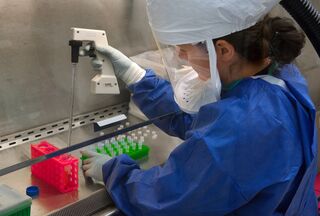Health
Why Students Need to Think Critically About Environmental Science and Epidemiology
Should teachers explain epidemiology and the basics of public health?
Posted July 3, 2021 Reviewed by Vanessa Lancaster

The COVID-19 crisis has wrought international and national inequalities, viral transformations, travel transformation, vaccination, non-vaccination, use of masks, refusal of masks, a departure from masks, and now a return to crowded life. It’s time to think about our future: from top to bottom, young to old.
Such moments of reflection often compel us to think about the implications for learning. We can’t help it. We’re educators.
COVID-19 and its associated upheavals have shined a light on the workings of science, which require openness and involve discovery, theorization, analysis, failure, and success—not necessarily in that order—in a process that can be circular, teleological, parallel, crisscrossing, logical, and contradictory. For those keen to learn, the facts are plain to see.
Despite the horrors wrought by the virus, the desires of governments and media for immediate, definitive explanations and solutions, and big pharma facing the prospect of taxpayer-funded, university-driven research it can bring to market, this is potentially a teachable moment about how knowledge is created.
Away from gene-sequencing and clinical trials, the public is suddenly receiving routine intelligence about epidemiology. Always crucial to understanding, treating, and preventing disease, avid public-health sociologists and statisticians have often been the poor cousins of big science and medicine. But now, the information they provide about the who/what/when/where/how of disease is daily news—and guidance.
Epidemiology is generally a graduate degree in the United States, though some topics may be covered in undergrad. What might it mean to incorporate some of the basics in school curriculum?
The Centers for Disease Control and Prevention have their own weighty self-study textbook. We’d like to see its principles become more central to various levels of education—starting with high school. That may seem very challenging for all concerned.
But school epidemiology classes already exist in parts of the country, and scholars are hoping to expand such instruction. So far, it looks as though this could be a helpful introduction for pupils to think critically about the intersection and divergence of science, health, and society. That inevitably turns our minds to experiences with another heavily applied area of knowledge: environmental studies.
Considerable anxiety is expressed about school pupils studying the environment. Some critics regard the field as propaganda, a form of brainwashing designed to transmogrify vulnerable minor charges into driven activists blinded by a mixture of despair and hope that fails the basic tenets of scientific inquiry.
So we are warned that “the fallacies of green education emanate from fear on the left that fossil-fuel companies and capitalism are ruining the planet,” resulting in the equivalent of eugenics and intelligent design running free K-12. This is derided as “science betrayed.” It is also supposedly unpopular with concerned parents.
The research doesn’t back up either claim. Climate science is widely taught in schools across the nation, and there is abundant evidence of careful adherence to the current state of knowledge—and minimal proof of parental opposition.
Able advocates of endowing pupils with the truth about our environmental crisis abound. The North American Association for Environmental Education is a crucial source for teachers—supported by "those dangerous radicals at Wells Fargo and Walt Disney." The Environmental Protection Agency (enthusiastically created by a Republican administration, lest we forget) also provides valuable material, including lesson plans.
Controversies will continue about such initiatives. The interest groups opposed to environmental science are as righteous as they are well-heeled, as Michael E. Mann has been forced to chronicle.
On the other side of the debate, rigorous pedagogues are rightly concerned with improving their work. Key figures in environmental studies are worried that the education of young people into the field’s fundamental principles has not gone far enough and needs more rigorous design, implementation, and evaluation.
The direction of history is clear, and it has encouraged us to call for incorporating epidemiology into the curriculum.
Given that young people have borne so much of the distress caused by Covid and had their education unhinged, might this not be the time to endow them with the capacity to understand better how disease travels and is contained, and how public health can be sustained and improved as part of the valuable work of orderlies, nurses, doctors, cleaners, clerks, researchers, and pharmacists?
High-school epidemiology can also connect to crucial environmental issues, given that the transfer of pathogens between species is at extraordinary levels, in concert with industrialized meat consumption.
Just as school pupils reacted vociferously to the emerging truth about pollution in the early-’70s (we were there), a new pedagogic push towards epidemiology may help them see how science and society intersect.




